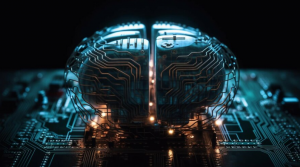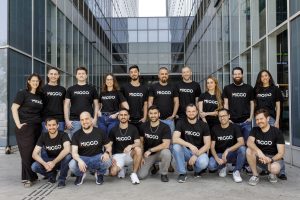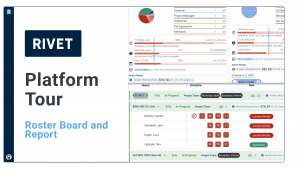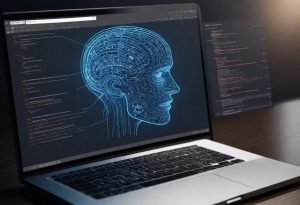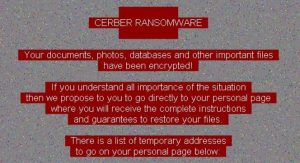For Pristine Logic, We Must Separate Data from the App Layer, says BDNA CEO Constantin Delivanis
![]() We’re in the midst of a massive technological shift, where our electronics and their software are becoming self-aware. It’s a humanistic trait that characterized our emergence from the age of Enlightenment into Industrialization, discovering a common language in biology, chemistry and physics. It ushered in a new world of understanding, reshaping the way we think of ourselves, our society and our economies.
We’re in the midst of a massive technological shift, where our electronics and their software are becoming self-aware. It’s a humanistic trait that characterized our emergence from the age of Enlightenment into Industrialization, discovering a common language in biology, chemistry and physics. It ushered in a new world of understanding, reshaping the way we think of ourselves, our society and our economies.
Today it’s data that’s become the basis of our new common language, and systems are being put in place to support multiple data sources in order to fully take advantage of the reams of data coming from enterprise applications, machine logs and beyond.
In today’s CEO series we hear from BDNA CEO Constantin Delivanis, a man who views APIs as cumbersome in his company’s efforts to catalog the enterprise tools we use for big data. BDNA is the powerhouse behind Technopedia, a catalog of more than 450,000 hardware and software products, Delivanis discusses the adoption of a common IT language that helps executives manage data in their organization to more effectively harness technology information for decision-making, support smarter business strategies and reduce costs.
How can data be a common language for the enterprise’s changing infrastructure?
In the post-PC era of anytime-anywhere mobile platforms, cloud computing and the Internet of things, data is increasingly fragmented into silos, while data variety and velocity grows exponentially. Since data provides an enterprise with the fundamental insights for collaboration and for making business decisions, it must become the basis for a common language. The old paradigm of integrating applications to address data explosion is no longer an option.
The market is adopting a new paradigm to solve this ever-increasing challenge, and the approach is one of data integration, where data from any source or application silo gets translated (filtered, organized and contextually enriched), and then made available as a common language to be consumed by applications or users.
![]()
![]()
See the entire CEO Series with Kristen Nicole on Pinterest and Springpad!
.
What’re the key differences between the data layer and the application layer, and where does BDNA fit in?
In the past, applications had to contend with a limited number of data sources. Application logic could be easily, directly and tightly coupled with raw data without significant problems. Today’s applications must accommodate multiple data sources containing millions of raw data streams such as social data, interest data, location data, event-driven data, health data, smart sensor data and machine data. Hence, tight coupling of application logic with the raw data is no longer an option. There is a need to separate the data layer from the application layer so that the application logic deals with cleansed, filtered and enriched data. This insulates enterprise applications from disruptions caused by the change, addition or deletion of a data source, thereby providing today’s chief information officers (CIOs) with the operational flexibility needed to respond to business requirements.
The data layer in essence is a separate subsystem or layer that processes raw data from systems, and cleanses, contextualizes and enriches the raw data into a common language so the application layer can easily process it. BDNA developed this innovative technology to create and maintain this data layer, which is used by hundreds of customers.
Three things you’d like to see incorporated into the enterprise data layer over the next 5 years?
An enterprise data layer or subsystem needs to have five layers:
1. An abstraction layer to take raw data from any data source and translate it into a common language
2. An organizational layer to filter, organize and process raw data
3. A public enrichment layer to add contextual public data
4. A private enrichment layer to add contextual, enterprise-specific data
5. A delivery layer to allow information consumption
You were named in Forbes’ “Midas 100 List” as one of the most influential investors in technology. What gives you confidence in the future?
We are experiencing one the most dramatic technological shifts in generations. Many factors are contributing to this shift, including new post-PC Internet and mobile platforms, cloud computing and rapid development cycles with diminishing costs. Furthermore, recent IPO offerings by companies such as Facebook, Yelp, LinkedIn, ServiceNow, Splunk and Jive motivate entrepreneurs and investors to capitalize on those trends, transform the present and influence the future.
![]()
CONSTANTIN DELIVANIS
DATA TRANSLATOR
A language you’d like to learn?
Music.
My next journey – learn to play piano and perform Beethoven’s Piano Concerto #5 in E Flat, Op. 73, “Emperor.”
An investment that made you think twice?
I collect black and white photography. Two of the photographs that I have hanging on my walls make me think every day about enjoying life. An exquisitely simple, yet stunning photograph by John Paul Caponigro of a Scottish thistle reminds me to appreciate the simple thistle. While a rather stark photograph by Joseph Koudelka, called “Breakers,” depicting a harsh black sea with breakers separating it from a bright white sky and a tiny seagull in the distance, captures the seagull’s freedom and life’s ups and downs.
Your ideal way for the world to leverage data?
Create a common language for IT that allows enterprises to leverage social, machine, sensor, private, public, biometric, educational and health data and democratize IT. With a common language of IT, we will see the emergence of agile micro apps where domain experts focus on the creation of the logic, predictive analytics, experiences and vertical applications without the burden of translating, adding and maintaining data sources or data streams.
A message from John Furrier, co-founder of SiliconANGLE:
Your vote of support is important to us and it helps us keep the content FREE.
One click below supports our mission to provide free, deep, and relevant content.
Join our community on YouTube
Join the community that includes more than 15,000 #CubeAlumni experts, including Amazon.com CEO Andy Jassy, Dell Technologies founder and CEO Michael Dell, Intel CEO Pat Gelsinger, and many more luminaries and experts.
THANK YOU








